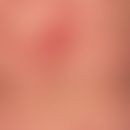HistoryThis section has been translated automatically.
Synonyms:
Gallstone(s);
First Describer
With the introduction of sonography in the 1970s, gallbladder stone was first described clinically (Krombach 2015).
In 1994, Grodstein et al. demonstrated increased stone formation in women receiving postmenopausal hormone therapy (Gutt 2020).
In 1996, von Wiersema first mentioned the possibility of endosonographic access to visualize the biliary system (Dietrich 2008).
DefinitionThis section has been translated automatically.
Gallstones are defined as the formation of concrements in the gallbladder or the extrahepatic or intrahepatic bile ducts (Höfler 2023).
You might also be interested in
ClassificationThis section has been translated automatically.
Very small gallstones are also called gallbladder grit or gallbladder sludge. In these microstones, growth to gallstones occurs in about 15% (Krombach 2015).
In gallstones, one differentiates between two different types of stones:
- Cholesterol stones
These occur in about 80% of those affected (Herold 2022). In western industrialized countries, they are found in up to 90% of cases. They consist of more than 50% cholesterol monohydrate (Kasper 2015).
- Pigment stones
Pigment stones are much rarer at about 20% (Herold 2022). They consist primarily of calcium bilirubinate and contain < 20% cholesterol and are subdivided into black and brown pigment stones (Kasper 2015).
According to the chemical structure, one differentiates between:
- 1. pure gallstones.
They are predominantly composed of bile and account for about 5 - 10 %.
- 2. mixed gallstones
These are composed of various components. They are found in 80-90% of gallstones.
- 3. combination stones
These show a different structure of core and shell and are found in approximately 5 - 10 % of gallstone carriers (Krombach 2015).
Occurrence/EpidemiologyThis section has been translated automatically.
Worldwide, the prevalence of gallstones is between 15 - 20 %, and in patients with liver cirrhosis or Crohn's disease even between 25 - 30 %. Women are affected twice as often as men (Herold 2022).
Gallstone formation increases from the age of 50. The incidence is 7.9% for men and 16.6% for women in the United States, and 5.3% for men and 13.9% for women in African Americans (Kasper 2015).
It is estimated that cholelithiasis exists in approximately 10-20% of all adults, of which 1-3% are symptomatic (Sigman 2023).
In children and adolescents, gallstone disease used to occur rarely. They were predominantly pigment stones. However, gallstones are now more common even in this age group, most likely due to increasing obesity. These are mainly cholesterol stones (Hjaltadottir 2020).
EtiopathogenesisThis section has been translated automatically.
Gallstones are the most common cause of diseases of the biliary system (Krombach 2015).
They form due to an abnormal composition of bile (Kasper 2015).
For the development of gallstones, the so-called rule of 6 applies: female, fair fat, forty, fertile, family (Herold 2022). Risk factors and causes can be, for example:
- increasing age
- gender (w: m 2 - 3: 1)
- hereditary factors
- obesity (20% overweight doubles the risk of cholelithiasis)
- diet
Both fasting and high cholesterol, low fiber diets play a role, as does parenteral nutrition.
- Bile acidosis syndrome
- Drug therapy with e.g. fibrates or somatostatin analogues (Herold 2022).
Cholelithiasis may also occur in idiopathic pancreatitis (Beyer 2021).
There are several mechanisms that lead to the formation of gallstones. The most important of these are increased biliary secretion of cholesterol, accelerated nucleation of cholesterol monohydrate in bile, and gallbladder hypomobility. However, environmental factors (up to 62%), genetic factors (up to 25% according to twin research) also play a role (Kasper 2015).
Hereditary factors are also indicated by the fact that gallstones are unusually common among the Pima Indians, while gallstones are virtually unknown among the Central African Maasai (Herold 2022).
Cholesterol stones
Risk factors for the formation of gallstones consisting mainly of cholesterol in industrialized countries are:
- female gender (estrogen)
- hypercholesterolemia
- obesity (Sigman 2023)
- increasing age
- therapy with fibrates, somatostatin analogues (Herold 2022) or contraceptives (Krombach 2015)
- Pregnancy
During gravidity, gallbladder sludge forms in 20-30% of women and gallstones in 5-12%. The majority of gallbladder sludge and gallstones regress postpartum (Kasper 2015).
Pigment stones
Pigmented bilirubin gallstones are predominant in developing countries. They are associated with hematologic disorders and inflammation of the biliary tract (Sigman 2023).
- 1. black pigment stones consist of either pure calcium bilirubinate or polymer-like complexes with mucin- glycoproteins and calcium and occur with, for example:
- elevated conjugated bilirubin in the bile
- cystic fibrosis
- Gilbert syndrome
- Z. n. ileum resection
- Z. n. ileal bypass
- Diseases of the ileum (Kasper 2015)
- 2. brown pigment stones
These consist of calcium salts of unconjugated bilirubin and contain varying amounts of cholesterol and protein. They are caused by increased amounts of unconjugated bilirubin in bile. This precipitates and causes lithiasis. Brown pigment stones are often found in inflammatory changes of the gallbladder and ductus cysticus (Kasper 2015).
PathophysiologyThis section has been translated automatically.
Formation of gallstones:
- 1. cholesterol stones
Bile itself consists of about 80% water, the rest being cholesterol, phospholipids and bile acid in a ratio of 5: 25: 70. Phospholipids and bile acid normally hold the insoluble cholesterol in solution in the form of minute micelles (Herold 2022).
About 85% of the cholesterol in bile comes from food (Hjaltadottir 2020).
If there is now an increase in cholesterol and / or a decreased amount of bile acid, the lithogenic index (LI) or the cholesterol saturation index (CSI) > 1. This causes the formation of cholesterol monohydrate crystals, the precursor of gallstones (Herold 2022).
There are 3 different mechanisms that cause gallstone formation:
- genetic predisposition
- formation of too much cholesterol in the liver
- Impaired mobility of the gallbladder.
Impaired gallbladder motility can be triggered, for example, by increased blood progesterone levels (gravidity), parenteral nutrition, weight loss (Hjaltadottir 2020), and certain medications such as contraceptives (Krombach 2015), fibrates, or somatostatin analogs (Herold 2022)
2. pigment stones
Black pigment stones can result from
- Chronic hemolysis, resulting in increased bilirubin concentration in the bile
- Loss of bile salts, resulting in an increase in bilirubin (e.g., terminal resection of the ileum, liver cirrhosis, Crohn's disease)
(Hjaltadottir 2020)
Brown pigment stones result from obstruction of bile flow, called cholestasis, or from aerobic bacteria (Hjaltadottir 2020).
Gallstone formation during gravidity:
During gravidity, two major factors occur that cause a cholelithogenic state:
- significant increase in cholesterol saturation of bile during the 3rd trimester.
- Slowing of the contractions of the gallbladder (Kasper 2015).
Postpartum, thesechanges rapidly regress (Kasper 2015).
Pathophysiology in the occurrence of colic:
During digestion of food, the release of cholecystokinin (CCK) from the duodenum causes contraction of the gallbladder. In pre-existing cholelithiasis, gallstones (Sigman 2023) can lead to obstruction of the cystic duct or choledochal duct during contraction (Kasper 2015). Particularly small concrements between 4 - 6 mm are potentially ablatable (Krombach 2015).
This causes visceral, severe and persistent pain with radiation to the right scapula due to the increase in intraluminal pressure with distension of the colon (Kasper 2015). The radiation into the right shoulder or back (so-called Head's zones) results from afferent nerve fibers from the area of the right scapula crossing with afferent pain fibers from the biliary system in the area of the spinal posterior horn (Standl 2010).
LocalizationThis section has been translated automatically.
Gallstones almost always originate in the gallbladder (so-called cholecystolithiasis). In about 15%, stones are also found in the choledochal duct, so-called choledocholithiasis. Only in 5% of patients with choledocholithiasis are there no stones in the gallbladder. In rare cases, gallstones develop in the intrahepatic bile ducts. This is referred to as cholangiolithiasis (Krombach 2015).
ClinicThis section has been translated automatically.
Approximately 75% of all gallstone carriers are asymptomatic. These stones are also referred to as "silent gallstones" (Herold 2022).
In the remaining 25%, so-called "symptomatic gallstones" are present, which can cause the following complaints:
- 1. biliary colic
In case of a sudden dilatation of the biliary tree - due to a stone passage or stone entrapment in the ductus cysticus or in the area of the papilla Vateri (Herold 2022) - a steady pain occurs. From there, the term "colic" is misleading (Kasper 2015).
Acute gallbladder distension usually causes pain in the right upper quadrant with radiation to the tip of the right scapula (Kasper 2015). However, there is no clearly typical localization in biliary colic (Gutt 2018). The pain symptomatology of biliary colic typically lasts for about 30 min to 5 h (Sigman 2023) and then subsides rapidly (Kasper 2015).
Other symptoms may include:
- Nausea
- Vomiting (Kasper 2015)
Complications are indicated by the following symptoms:
- Fever
- Chills (Kasper 2015)
- 2. nonspecific complaints in the upper abdomen.
Patients complain of meteorism, feeling of pressure and fullness in the right upper abdomen, intolerance of mainly fatty or fried foods, coffee and cold drinks (Herold 2022)
- 3. murphy sign
The Murphy sign occurs in acute cholecystitis during physical examination: during deep palpation in the right upper abdomen, there is a sudden stop of deep inspiration due to pain (Herold 2022).
DiagnosticsThis section has been translated automatically.
The diagnosis is made by:
- anamnesis
- clinical examination
There may be pressure pain in the right upper abdomen, below the thorax (Hjaltadottir 2020). The so-called Murphy sign (see above "Clinical picture" rather indicates a complication of gallstones (Herold 2022).
- Evidence of cholelithiasis by sonography, endosonography, MRC, CT, ERC (endoscopic retrograde cholangiography), or PTC (percutaneous transhepatic cholangiography).
- Laboratory findings (Herold 2022)
ImagingThis section has been translated automatically.
Abdominal X-ray
Radiologically, important evidence of gallstone disease can be found in:
- emphysematous cholecystitis
- gallstone ileus
- porcelain gallbladder (Kasper 2015)
The vast majority of cholesterol stones and also bilirubin stones do not give a shadow on radiography (Herold 2022). Only about 20% of cholesterol stones are calcified and thus radiopaque. Of the black pigment stones, about 75% are calcified. Brown pigment stones are basically not calcified (Krombach 2015).
Abdominal sonography
Abdominal sonography is the fastest and most sensitive method for detecting gallstones (Herold 2022). It is practically the domain in the diagnosis of gallstones (Krombach 2015).
The detection of gallstones up to a diameter of 1.5 mm (Kasper 2015) is successful due to:
- Positional displacement when the patient is repositioned.
- visualization of the stones in 2 planes
- arched anechoic reflux with posterior sonic release (Krombach 2015) so-called stone or sonic shadow (Sigman 2023). Only small concretions may lack the sonic shadow (Krombach 2015).
The rate of false-negative and false-positive results in sonography is between approximately 2 - 4 % (Kasper 2015).
Detection of gallbladder sludge:
- low echogenic activity
- does not produce a sonic shadow
- Gallbladder sludge is preferentially found in the most dependent position of the gallbladder (Kasper 2015)
Evidence of a dilated choledochal duct:
- in patients with preserved gallbladder > 7 mm in diameter
- after cholecystectomy > 9 mm diameter
- with age, the diameter of the choledochal duct usually increases (Herold 2022)
Complications such as acute cholecystitis are indicated by:
- pericholecystic fluid
- thickening of the wall (> 0.4 cm)
- Size change of the gallbladder (Sigman 2023)
- three-layeredness of the gallbladder wall
Cave: Three-layeredness and thickening of the gallbladder wall is also found in portal hypertension and acute hepatitis (Herold 2022).
Failure to visualize the gallbladder when bile ducts are present:
This indicates:
- obstruction of the bile ducts
- acute or chronic cholecystitis
- Z. n. cholecystectomy (Kasper 2015).
Endosonography
Endosonography plays a role especially in patients with microlithiasis (Dietrich 2008). It is also used to evaluate choledocholithiasis with sensitivity and specificity similar to MRI. Since this is an invasive examination, MRI is preferred when available (Hjaltadottir 2020).
Abdominal CT.
On CT, density measurements can be used to distinguish between the two types of stones.
Cholesterol stones float in the gallbladder, whereas pigment stones sediment at the bottom of the gallbladder (Herold 2022).
However, CT is not as good as sonography for assessing lithiasis of the bile ducts (Sigman 2023) because the sensitivity of CT is poor in this regard.
Abdominal CT is predominantly used for the diagnosis of cholecystitis. Here, the sensitivity is 94% and the specificity is 59% (Hjaltadottir 2020).
MRC(P)
This examination is used in particular to visualize the biliary tree (Sigman 2023). MRC(P) is used especially in cases of clinical v. a. gallstones and negative sonography. In this case, a filling defect can be detected in the event of lithiasis. The sensitivity is 93% and the specificity 96% (Hjaltadottir 2020).
ERC(P).
If other imaging techniques do not show a clear picture, further clues may be found with this. Additionally, ERCP is used to treat choledocholithiasis (Sigman 2023).
PTC
Because of the high rate of complications, PTC is a so-called "reserve method" if ERC(P) is not possible (Herold 2022).
LaboratoryThis section has been translated automatically.
Depending on the location of the stones and type of disease can be found:
- in cholecystitis:
- leukocytosis
- CRP elevated
- elevated BSG
- possibly slight increase of gamma- GT and bilirubin (Herold 2022)
- in case of obstruction of the choledochal duct elevated values for:
- gamma- GT
- Bilirubin (Herold 2022)
- in ascending cholangitis may occur:
- slight increase in transaminases
- LDH increase
- CRP usually significantly elevated (Herold 2022)
Differential diagnosisThis section has been translated automatically.
- Appendicitis (appendix upturned)
- Pancreatitis (determine lipase)
- ulcer (anamnestic data, gastroscopy)
- primary sclerosing cholangitis, so-called destructive non-purulent cholangitis (MRC or ERCP)
- primary biliary cholangitis (signs of cholestasis with increase of gamma GT, AP, bilirubin and detection of antimitochondrial antibodies AMA- M2, IgM- increase)
- fibrinous perihepatitis, also known as Fitz-Hugh-Curtis syndrome (a complication of gonococcal or chlamydial infection)
- Papillitis sclerosans (pain dependent on food intake without evidence of a concretion; diagnosis by MRC or endosonography)
- pulmonary embolism (in addition to history, determination of blood gases, color duplex of legs, ECG, echocardiography)
- acute myocardial infarction in the area of the posterior wall (determination of troponin T / l, CKMB, ECG)
- nephrolithiasis (determination of urine status, sonography)
- Parasites in the area of the liver / bile ducts such as ascarids, bilharziasis, echinococcus, topical liver flukes (in Europe only rarely occurs;
- Tumors of the liver, bile ducts, gallbladder, papilla Vateri, pancreas, colon).
(Herold 2022)
Complication(s)(associated diseasesThis section has been translated automatically.
In the majority of symptomatic gallstones, complications occur in the form of:
- acute cholecystitis
- chronic cholecystitis (the chronic form can lead to a shrinking gallbladder, with the threat of gallbladder carcinoma as a late complication)
- Stone perforation (rarely occurring)
- Mirizzi syndrome (rare form of obstructive icterus)
- Cholangitis (Herold 2022)
- Bouverette syndrome
This is a rare form of gallstone ileus (Alaez- Chillaron 2017).
- Stone migration with complications in the form of:
- occlusion of the cystic duct (Herold 2022)
- biliary pancreatitis
- gallstone ileus (Hjaltadottir 2020).
General therapyThis section has been translated automatically.
The treatment of gallstones is symptomatic on the one hand and causal on the other.
- 1. when biliary colic occurs, it consists primarily of:
- Food restriction
This should be maintained for at least 24 h (to inhibit motility of the bile ducts [Gutt 2018]). The subsequent diet should not contain fatty or fried foods (Herold 2022).
- Spasmolytics.
Symptomatic therapy includes administration of a spasmolytic agent such as butylscopolamine i. v. (contraindications: e.g., bladder voiding dysfunction, glaucoma) or nitroglycerin sublingually 0.8 mg or 2 strokes (contraindication: PDE- 5 inhibitors such as sildenafil, vardenafil, tadalafil [Michel 2016])
(Herold 2022 / Gutt 2018 / Standl 2010)
- Analgesics
Analgesic therapy depends on the stage of colic:
Mild colic:
- NSAID e.g. diclofenac 75 mg i. m. or indometacin 75 mg i. v. or 2 x / d 75 mg as suppository.
- Metamizole 1 g i. v. (Standl 2010).
However, metamizole is no longer used in some countries because of the risk of agranulocytosis (Herold 2022).
Severe colic:
- Opioids such as pethidine
plus
Dosage recommendation: pethidine 50 mg i. v. plus butylscopolamine 20 mg i. v. (Herold 2022).
Antibiotics are not a form of treatment for biliary colic, although they are for complications caused by gallstones (Sigman 2023).
If the v. a. is a bacterial infection of the bile ducts, as is the case with cholangitis or cholecystitis, E. coli and enterococci are the most common pathogens.
In this case, ceftriaxone plus metronidazole or alternatively ampicillin plus sulbactam is recommended for mild cholangitis. In a severe course of cholangitis, piperacillin plus tazobactam or carbapenems are indicated (Herold 2022).
- ERC 2.
If occlusive icterus results from choledocholithiasis, therapy consists of stone extraction by ERC (Herold 2022).
In addition, ERC is performed in the presence of cholangitis as an emergency measure to prevent cholangiosepsis (Herold 2022).
- 3. shock wave lithotripsy (ESWL).
Extracorporeal shock wave lithotripsy can be performed in patients poorly suited for surgical measures, but the risk of recurrence is very high (Sigman 2023).
- 4. medicinal dissolution of gallstones
Drug dissolution of gallstones has shown little efficacy to date, but the recurrence rate is very high. Therefore, this procedure is no longer recommended (Herold 2022).
5. surgical therapy
see below
Operative therapieThis section has been translated automatically.
Indications for cholecystectomy
Since patients with gallstones experience symptoms or complications in only about 25%, there is no need for treatment if gallstones are simply present. The indication for surgery is only given when the stones become symptomatic (Herold 2022).
The practice guidelines of NICE (National Institute for Health and Care Excellence) and EASL (European Association for the Study of the Liver) also advocate conservative treatment of asymptomatic cholecystolithiasis (Gutt 2020).
Should symptomatic patients improve with the above-mentioned (drug) therapy, elective cholecystectomy can be attempted (Standl 2010).
An indication for cholecystectomy is also given in the presence of an increased risk of degeneration such as:
- silent porcelain gallbladder (risk of degeneration is 62% [Gutt 2020]).
- large gallbladder stones > 10 mm (from a size of > 3 cm the risk of carcinoma increases tenfold [Gutt 2020]).
- Presence of an additional gallbladder polyp > 10 mm (Herold 2022). At this size, the risk of degeneration is approximately 50% (Gutt 2020).
Cholecystectomy should be performed laparoscopically using a 4 trocar technique. Routine antibiotic administration perioperatively is not required (Gutt 2020).
If urgently indicated, cholecystectomy can be performed at any stage of pregnancy (Gutt 2020).
According to EASL and SAGES guidelines, the incidence of p.o. wound infection can be reduced by antibiotic administration in patients with:
- known diabetes mellitus
- acute cholecystitis
- cholangitis
- Age > 60 years (Gutt 2020)
Simultaneous evidence of choledocholithiasis and cholecystolithiasis.
In this case, therapeutic splitting with primary ERC for bile duct repair and subsequent (preferably within 72 h) laparoscopic cholecystectomy is recommended (Herold 2022).
Cholecystitis
If the diagnosis is cholecystitis, the indication is for early selective laparoscopic cholecystectomy within 24 h (Herold 2022).
Progression/forecastThis section has been translated automatically.
According to Kasper (2015), 60 - 80 % of patients with asymptomatic gallstones remain symptom-free during a follow-up period of 25 years. The incidence of complications is approximately 0.1 - 0.3 % annually. However, most of these patients with complications had prior warning symptoms (Kasper 2015)
Prophylactic cholecystectomy is also not warranted in diabetic patients with silent cholelithiasis (Kasper 2015).
The lethality rate due to gallstones depends on the type of complications. When cholecystitis occurs, the most common complication, it was 0.8 / 100,000 in 2014. Inflammation of the bile ducts, cholangitis, is a much more serious condition, with a lethality rate of up to 10% (Hjaltadottir 2020).
ProphylaxisThis section has been translated automatically.
The preventive intake of ursodeoxycholic acid to prevent the formation of gallstones is no longer generally recommended. The only exceptions are phases of weight reduction or after bariatric surgery. Here, ursodeoxycholic acid should be prescribed for a limited period at a dosage of 500 mg / d (Gutt 2020).
Another exception is young patients with "low phospholipid associated cholelithiasis" (LPAC) syndrome, in whom recurrent bile duct stones or intrahepatic stones occur. Prevention with ursodeoxycholic acid is possible here (Gutt 2020).
Empirical medicine also gives artichoke leaves(Cynarae folium) for prophylaxis. No positive monograph with this indication.
Phytotherapy internalThis section has been translated automatically.
For prophylaxis according to empirical medicine Cynarae folium, see also under Prophylaxis
LiteratureThis section has been translated automatically.
- Dietrich C F, Allgayer H, Arcidiacono P G, Barreiros A P, Becker H D, Beyer T, Braden B, Burmester E, Carrara S, Dietrich C F, Eberhardt R, Faiss S, Fischbach W, Frauscher F, Frey H, Fritscher- Ravens A, Giovannini M, Greis C, Herth F J F, Hocke M, Hollerbach S, Janssen J, Jenssen C, Jürgensen C, Kann P H, Krasnik M, Leineweber T, Mayr M, Menzel J, Mertens J, Mitterberger M, Möller K, Neye H, Niehaus J, Nürnberg D, Ortiz- Moyano C, Pallwein L, Sailer M, Sarbia M, Seifert H, Siehr K, Sudholt H W, Tiede U, Topalidis T, Vilmann P, Wagner S, Will U (2008) Endosonography: Textbook and atlas of endoscopic ultrasound. Georg Thieme Verlag Stuttgart / New York 384, 456
- Grodstein F, Colditz G A, Stampfer M J (1994) Postmenopausal hormone use and cholecystectomy in a large prospective study. Obset Gynecol 83 5 - 11
- Gutt C, Jenssen C, Barreiros A P, Götze T O, Stokes C S, Jansen P L, Neubrand nM, Lammert F (2018) Updated S3 guideline of the German Society of Gastroenterology, Digestive and Metabolic Diseases (DGVS) and the German Society of General and Visceral Surgery (DGAV) on prevention, diagnosis and treatment of gallstones. AWMF-Register- No. 021 / 008
- Gutt C, Schläfer S, Lammert F (2020) Treatment of gallstones. Dtsch Arztebl Int 117 148 - 158.
- Hjaltadottir K, Haraldsdottir K H, Moller P H (2020) Gallstones - review. Laeknabladid 106 (10) 464 - 472
Höink A J, Katoh M, Wullstein C (2016) Bouveret's syndrome: an unusual form of gallstone ileus with definite findings on diagnostic imaging. Fortschr Röntgenstr 188 1067 - 1068 DOI http://dx.doi.org/10.1055/s-0042-110854
- Herold G et al (2022) Internal medicine. Herold Publishers 565 - 568
- Höfler G, Kreipe H, Moch H (2023) Pathology: the textbook. Elsevier Urban und Fischer Verlag Germany 676
- Kasper D L, Fauci A S, Hauser S L, Longo D L, Jameson J L, Loscalzo J et al (2015) Harrison's Principles of Internal Medicine. Mc Graw Hill Education 2076 - 2083
- Krombach G A, Mahnken A H (2015) Radiologic diagnosis of abdomen and thorax: III Abdomen ). Gall bladder and bile ducts. Georg Thieme Verlag Stuttgart 440 - 442
- Michel M S, Thüroff J, Janetschek G, Wirth M (2016) Urology. Springer Verlag Berlin / Heidelberg 1517
- Sigman D F, Dayal N, Meseeha M (2023) Biliary Colic. Treasure Island (FL) StatPearls Publishing DOI: https://www.ncbi.nlm.nih.gov/books/NBK430772/
- Standl T, Schulte am Esch J, Treede R D, Schäfer M, Bardenbeuer H J (2010) Pain therapy: acute pain - chronic pain - palliative care. Georg Thieme Verlag Stuttgart 246 - 247
Incoming links (1)
Cineol;Outgoing links (46)
Acute hepatitis; Acute pancreatitis; Alkaline phosphatase; Ampicillin; Antibiotics (overview); Bacteriae; Bile duct carcinoma; Bilharzia; Biliary colic; Bilirubin; ... Show allDisclaimer
Please ask your physician for a reliable diagnosis. This website is only meant as a reference.




